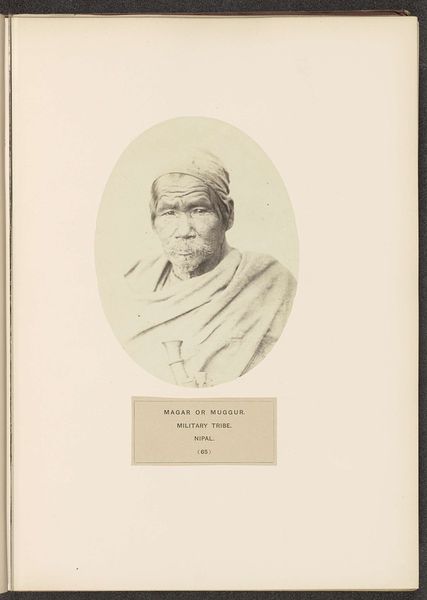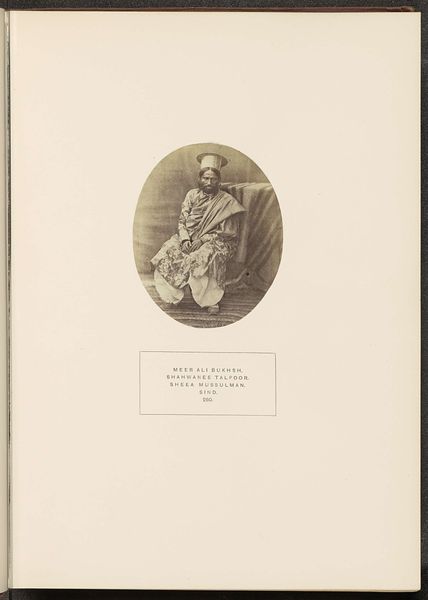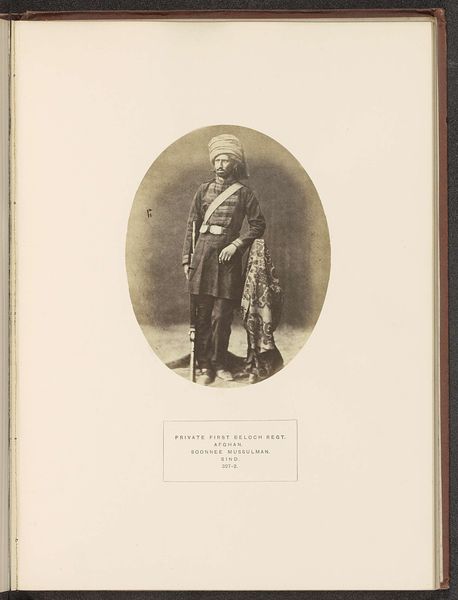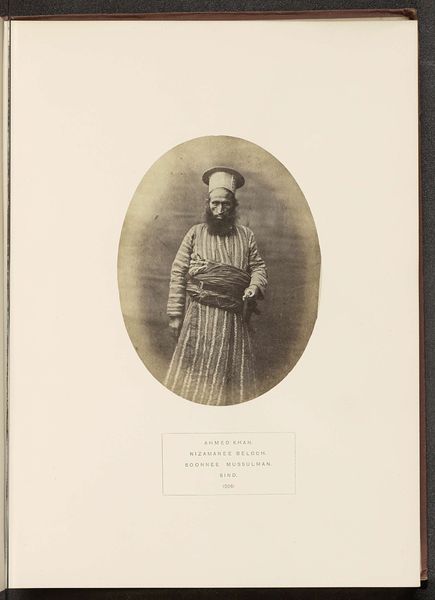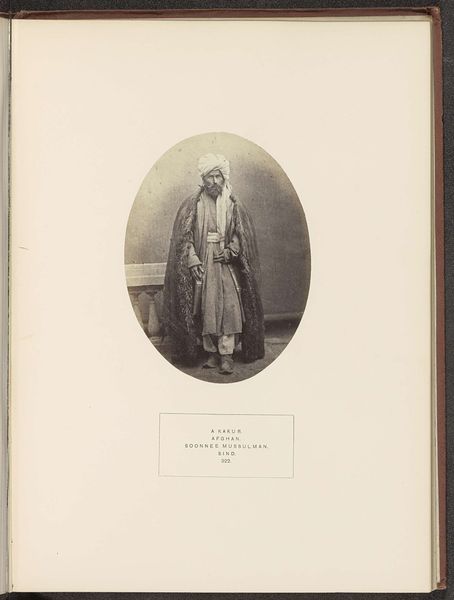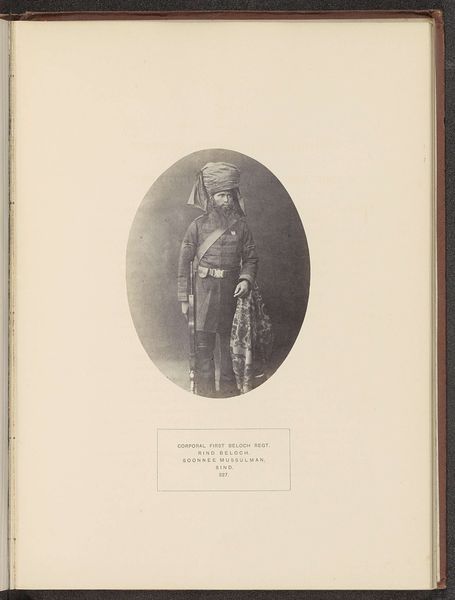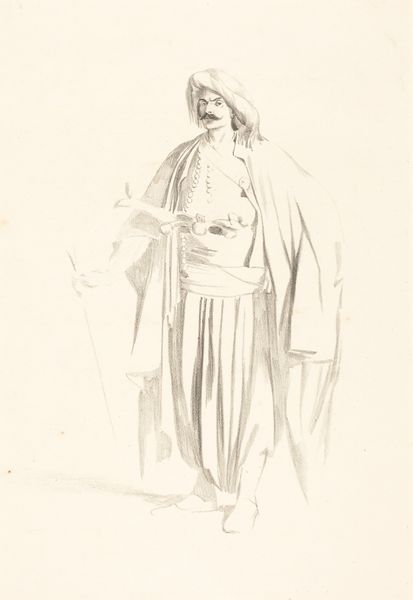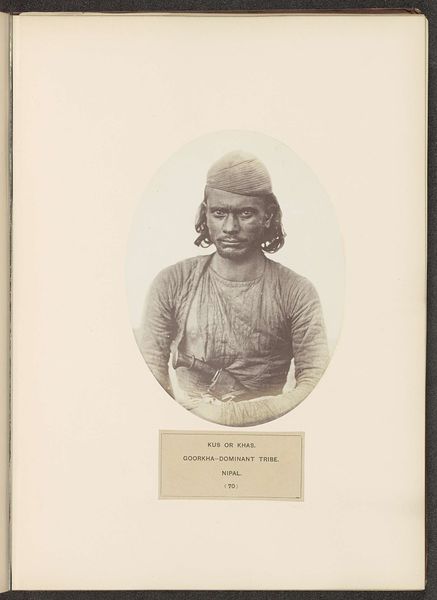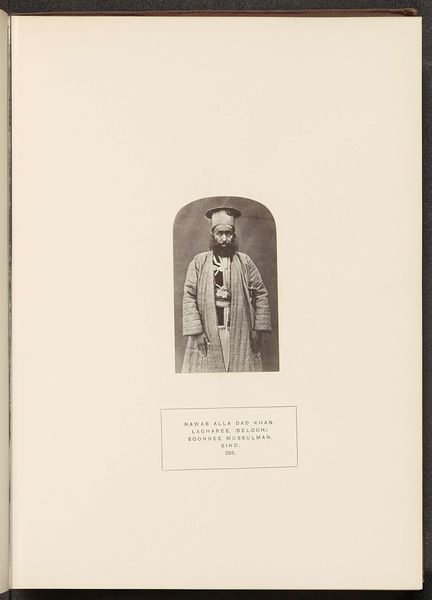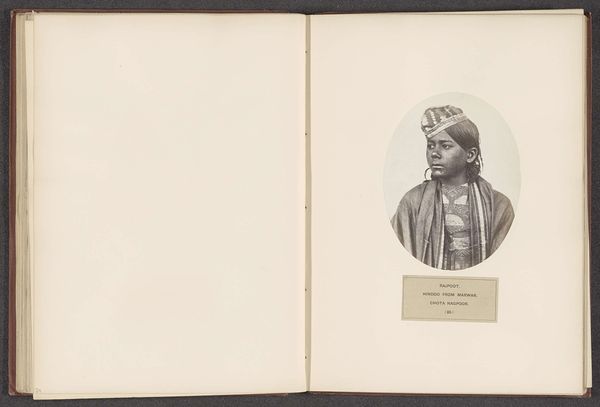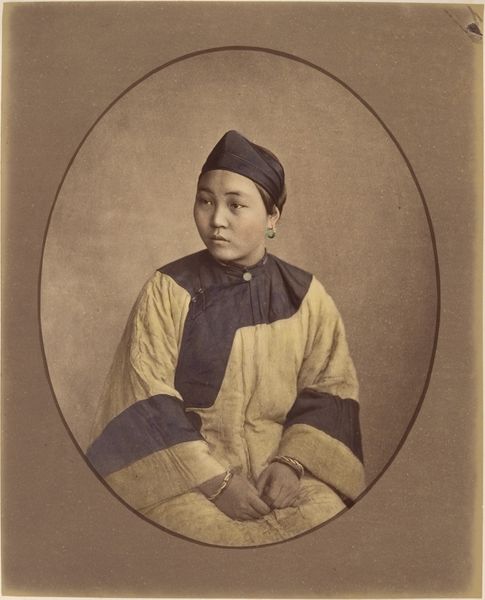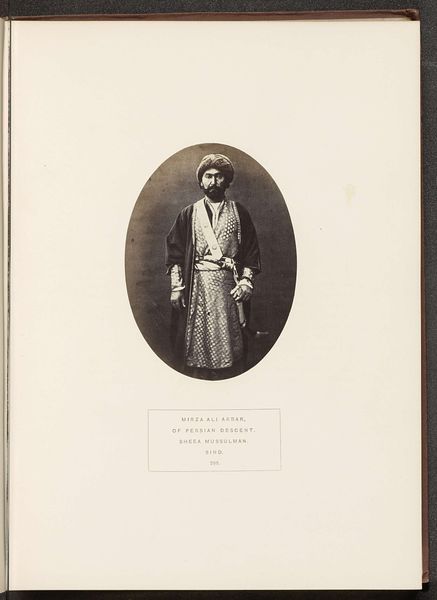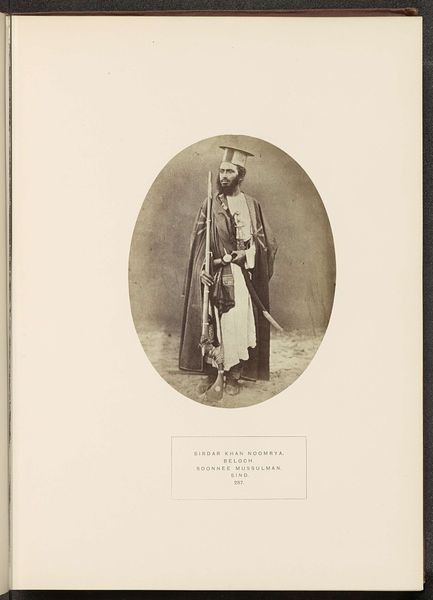
photography
#
portrait
#
photography
#
orientalism
#
genre-painting
#
realism
Dimensions: height 175 mm, width 129 mm
Copyright: Rijks Museum: Open Domain
Editor: So, here we have Benjamin Simpson's photograph, "Portret van een Limbu man uit Nepal," dating from before 1868. It's a striking portrait, the man's gaze is quite intense, almost challenging. I wonder, how should we approach understanding this piece within its historical context? Curator: That's a key question. Photographs like this circulated widely, contributing to and often solidifying existing European views of non-Western people. Given that this was produced during a period of intense colonial expansion, what do you think was the function of this photograph and similar ones in the public sphere back then? Editor: I imagine it served a dual purpose. On one hand, perhaps it offered a glimpse into the lives of people from distant lands, fostering a sense of curiosity, but also... Curator: But also, likely reinforcing the power dynamics of the time. These images weren’t simply objective records; they actively constructed a particular narrative. The framing, the pose, even the choice of subject—all contribute to a narrative often influenced by Orientalism. Consider the label beneath the image, “Limboo. Aboriginal – Trans-Himalayan. Nipal." How does this language contribute to how this man is perceived? Editor: It otherizes him, placing him geographically and ethnically in a way that feels... scientific, but also detached. It’s as though he's an object of study rather than an individual. Do you think Simpson was aware of this? Curator: That's complex. Photographers of this era operated within specific social and institutional frameworks. The colonial context shaped their perspectives and the audience for their work. So, intention is hard to determine, but the impact on the reception of this image, reinforcing colonial power structures, is pretty clear. What does this photograph make you think about today, in terms of representation? Editor: It makes me think about who gets to control the narrative and the importance of understanding the historical forces at play when we view images like this. It's a good reminder that photography, even seemingly straightforward portraits, are never truly neutral. Curator: Precisely. Reflecting on the power of images and their impact on our understanding of history and other cultures. We've both learned something valuable today.
Comments
No comments
Be the first to comment and join the conversation on the ultimate creative platform.
